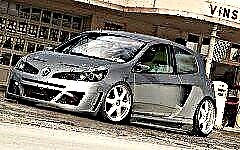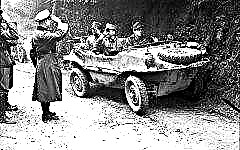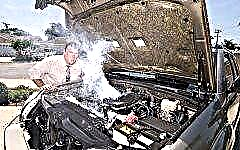

The content of the article:
- Condition of car tires
- Brake system
- Steering
- The level of fluids used in the car
- Headlights
- Ball joints
- Fuel level
According to statistics, most serious car breakdowns are the result of initial minor malfunctions and disturbances in its functioning. As a rule, violations and defects occur in a number of so-called "critical" units and assemblies.
Constant monitoring of the serviceability of these units will help the car owner avoid unpleasant surprises on the road. Consider seven major faults that can lead to the need for serious repairs or even an emergency on the road.
Condition of car tires

The first thing to remember is that the rubber of the tires must be suitable for the weather conditions. Do not rely on all-season tires - their quality will not allow you to drive normally on snow and ice. Tires must provide reliable traction and good handling.
It is extremely important to constantly monitor that the tires do not have local swelling - this indicates that at any, the most critical moment of movement on the road, the rubber can burst, and then an accident is inevitable. Also unacceptable are the fibers of the cord crawling out - the steel fibers of the threads of the tire material.
A very important point is the age of the tires and the depth of the tread groove on the tires, which should be more than one millimeter. Tires with a shallow tread depth do not provide sufficient drainage, which means that on a wet or slippery road they will cause the so-called aquaplaning effect, or provoke a strong tire skid. Tires of different ages must not be installed on the same axle.
Brake system

Brakes are an essential part of the safety system of any moving vehicle. If the brakes on the car suddenly began to work worse, do not console yourself with the thought that it seemed to you or that you can, on occasion, use the hand brake or brake with the engine. An emergency will not give a chance in the absence of normal brakes.
The wear of pads, drums and brake discs should be constantly monitored. The condition of these parts of the brake system can be easily checked visually or consult any service center or service station. The working surface of the brake discs is clearly visible through the hole in the wheel disc. If on the outer side of the surface a side is visible more than one millimeter in height, you should not pull and as soon as possible contact auto repair shops with a request to replace the brake discs.
If, when you press the brake pedal, a creak or rattle is heard, you should not postpone a visit to the service station either - most likely, the elements of the brake system are already "on the verge" and it is time to change them.
Another sign that the braking system will soon fail is the car drifting to the side when driving in a straight line. In this situation, a distinct high-pitched squeal, grinding sounds can also be heard, and the speed of movement decreases significantly.
Steering

The steering can become unusable not only from time to time, but also under conditions of constant driving on poor-quality road surface or off-road. The steering column should not play or vibrate too much when the car picks up speed.
If, while driving, you feel a decrease in the reaction of the wheels to steering, you should contact the service center as soon as possible.
Power steering or electric power steering are systems whose serviceability cannot be determined without specialized equipment. Therefore, you should systematically check their serviceability by contacting a service center or service station.
The level of fluids used in the car

Fluids that should be monitored closely when operating a vehicle include:
- machine oil;
- coolant;
- brake fluid;
- transmission oil.
The consumption and oil level in the engine are very important characteristics, which are a kind of indicator of the quality of engine operation. Over time, the nominal consumption of lubricating oil declared by the manufacturer changes upward, and it is necessary to change it more often than with an interval of ten thousand kilometers.
For models not equipped with an electronic sensor, you should regularly check the oil level using a special dipstick in the engine and add oil without waiting for the alarm indicator on the dashboard to light up.
If the car is equipped exclusively with an electronic oil level sensor, you should regularly contact the service station to check the serviceability of this sensor. If the level of lubricating oil in the engine is unacceptably low, the case may end with a groove in the crankshaft and breakdown of the engine's cylinder-piston unit.
When, according to the results of measurements, the oil level rose, and the level of the coolant in the expansion tank, on the contrary, fell, most likely, the coolant got into the internal combustion chamber or into the lubrication system. In this situation, it is absolutely impossible to start the engine! There is only one way out - a tow truck and a road to the service station.
Lack of coolant can cause the motor to boil: little or no cooling leads to constant operation of the forced cooling fan, but it may not be enough if the car is "pushed" in a traffic jam. If a car's engine overheats systematically, this can cause deformation of the cylinder head cover, which is always an expensive and unpleasant repair.
Brake fluid must be controlled in the same way as lubricating oil and coolant. If you do not systematically top up and replace it, the brake system can boil and fail on a long descent, which will lead to an accident.
Gear oil is often overlooked in the list of fluids to watch out for. This substance is not replaced as often as the oil in the engine, and therefore is periodically ignored by car owners. But for a manual transmission, a lack of transmission oil can lead to the fact that its shifting will require more and more effort. As a result, some of the programs will become impossible to turn on. The worst option in this case is the failure of the bearings and the final breakdown of the gearbox.
Headlights

Driving with faulty lighting is not only the risk of running into a fine from the traffic police, but also the danger of an accident. It should be remembered that the problem can be caused not only by a malfunction of any lamp in the headlight system, but also by a gradual decrease in the transparency of lenses and lenses or their contamination. Lack of correct balancing of the headlamp luminous flux can also lead to an emergency.
If you have the slightest suspicion of a loss in the quality of the headlights, you should not rely on the case and continue driving. Better to immediately clarify and localize the problem.
Ball joints

This car unit in the nineties of the last century had a rather bad reputation, but now manufacturers have found a solution and significantly extended the service life of the ball joints. Nevertheless, operation in conditions of poor-quality road surfaces and off-road conditions that do not meet the declared permissible load standards and high speeds can easily lead to the fact that the ball joint will fail.
If, during a sharp turn in the area of any of the wheels, single clicks, chirping or even clicking are heard, the chassis must be immediately examined at a service station.
If you ignore the first signs of a malfunction, at full speed, the wheel can move inside its trajectory and cause a very strong skid of the car, which will inevitably lead to an accident.
Fuel level

A gasoline leak is one of the most unpleasant situations for a car owner. Spraying gasoline under the hood of a car can even be caused by a microscopic crack in the fuel system, and this inevitably leads to ignition. You can check the health of the system visually by regularly inspecting all tubes, pipes and hoses, as well as checking if spots appear under the car.
Especially often, this problem can manifest itself if the car has not been used for a long time, and then they gave it an extreme load, driving it at high speed on a bad road surface.
An additional control point arises if an automatic transmission is installed in the car. The pipes from the gearbox to the cooling radiator must also be serviceable and intact, otherwise there is a high probability of intense fire, which is unsafe for all passengers in the cabin.
By following simple recommendations for car care and regularly checking the components most vulnerable to critical breakdowns, the car owner can not only significantly extend the service life of his car, but also ensure the safety of his movement on the roads.











